The People Behind Endeavour: Engineers Reflect on NASA's Youngest Shuttle
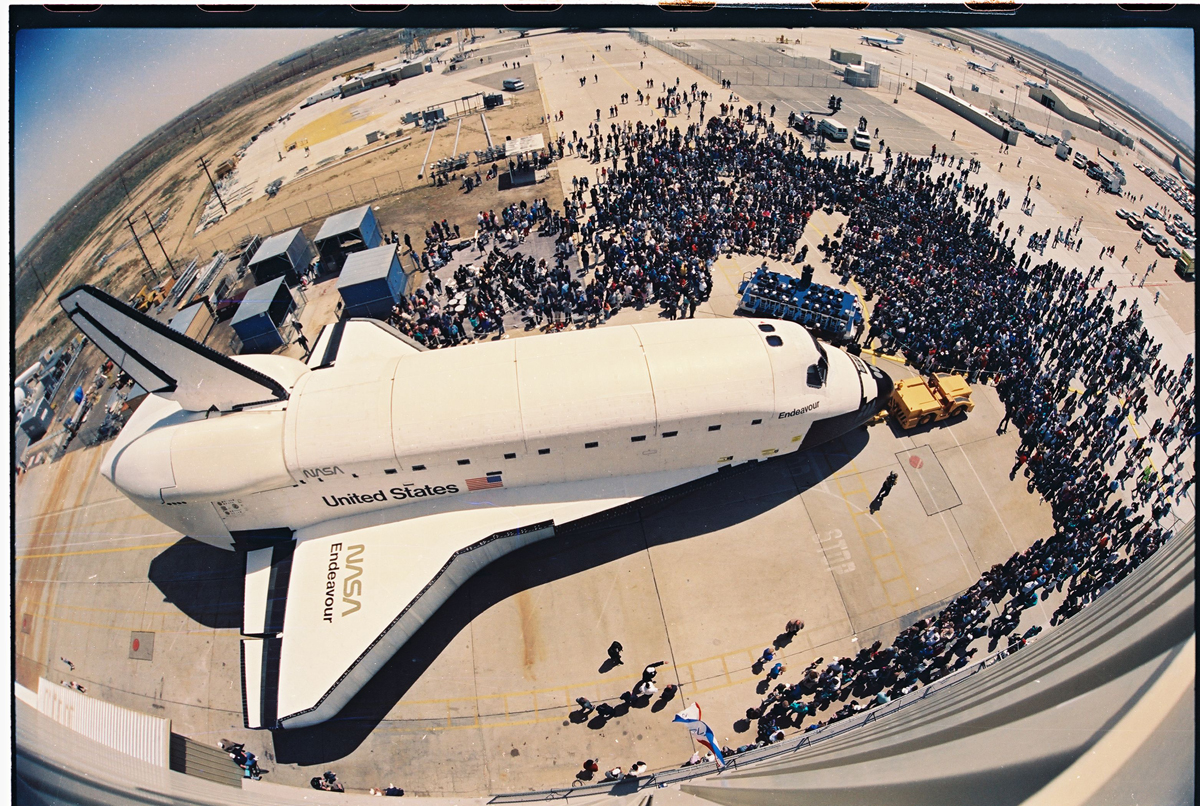
When Al Hoffman was offered the opportunity to join the engineering team who was building the space shuttle Endeavour, he jumped at the opportunity to become part of what he considers one of the best programs in the world.
"I was doing space shuttle main engine tests at Rocketdyne and I got a phone call one day that said: how would you like to come to Palmdale [Calif.] and build a space shuttle?" Hoffman told SPACE.com. "I said, 'just tell me when and I'll be there in a heartbeat.' I thought it was the greatest opportunity in the world, and it was."
More than 20 years later, Endeavour is poised to launch on its final mission to the International Space Station. The shuttle is slated to lift off on Monday (May 16) at 8:56 a.m. EDT (1256 GMT). [Video: Endeavour's Final Mission Goals]
Seeing Endeavour take to the skies for the final time will be a proud but bittersweet moment for Hoffman, who has been intimately involved with Endeavour since the beginning of its spaceflying career.
From the start
In the late 1980s, Hoffman became the director of assembly and test operations for the space shuttle program at Rockwell International, the company contracted by NASA to design and manufacture the orbiters. Rockwell was acquired by the Boeing Co. in 1996.
Hoffman and his team were involved in everything from the installation of mechanical and electrical units to the interior and exterior thermal protection systems on the shuttles. Even though Endeavour, the youngest of NASA's fleet, was the first vehicle he worked on, Hoffman was quickly inducted into a close-knit group of shuttle workers who were tied together through triumph and tragedy. [Q&A with Endeavour's 1st Commander Dan Brandenstein]
Get the Space.com Newsletter
Breaking space news, the latest updates on rocket launches, skywatching events and more!
"My second day with Rockwell was the day we lost Challenger," Hoffman said. "I saw how everybody was devastated, but at the time, I could not fully realize the impact of the devastation. Then, 17 years after the Challenger accident, early in the morning on the anniversary, I woke up thinking about it. I thought about the time I spent on the program since then. After spending all those years, I could absolutely relate."
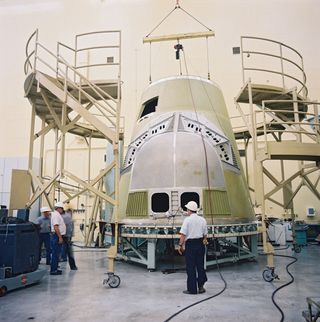
For Hoffman, and so many of his colleagues, being a part of the space shuttle program was more than just a job: it was a distinction they were proud to be a part of, and the workers banded together like a family.
"It was honestly the best team I've ever been associated with," said Bill Lang, who was the director of quality during the construction of Endeavour. "I look back on it, and it was the best part of my career. It's an amazing sense of accomplishment." [Most Memorable Shuttle Missions]
Since Hoffman joined Rockwell just prior to Endeavour's construction, the baby of the fleet holds a special place in his heart.
"I do have an affinity for Endeavour, since it was my first vehicle," Hoffman said. "I remember standing in the hangar bay when STS-49 launched – its first mission back in 1992. We had a huge screen set up and we were all standing around watching the launch. I kind of welled up with tears. It was very emotional."
Learning from the others
As the newest of NASA's shuttles, the engineers who built Endeavour benefitted from the extensive knowledge they had gained from the legacies of Columbia, Challenger, Discovery and Atlantis.
"It was just an easier build for us," Lang told SPACE.com. "We had so many lessons behind us that when it came to work on Endeavour, it was a faster process."
Endeavour also benefitted from its siblings in more than just a conceptual sense. The orbiter was built using structural spare parts from the construction of Discovery and Atlantis. [Space Shuttle Endeavour Construction Photos]
"When Challenger was lost, and we were authorized to go ahead and build another orbiter, those pieces already existed," said Dwight Woolhouse, who began working in the shuttle program in 1972, and worked closely with Lang in quality assurance during the construction of Endeavour. "These structural spares saved us probably two years in the manufacture of the orbiter."
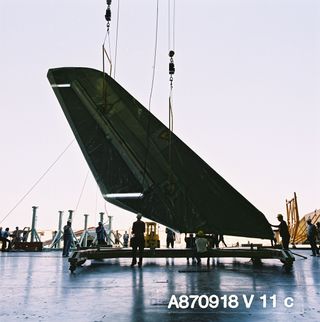
But despite being the last one in the production line, there are very few differences between Endeavour and the rest of the fleet, Hoffman said. Other than the obligatory design and hardware upgrades, the shuttles were intended to be mostly uniform to facilitate the astronaut training process.
Still, there are some very subtle characteristics that set Endeavour apart from the rest.
"They were similar, but they were all unique in their own ways," Hoffman said. "For anyone who follows orbiters closely, I think the most striking thing that you would see on Endeavour happened to be the drag chute — it made the tail end, the vertical area, look a little different there. We were also upgrading the thermal protection systems, so when we built Endeavour, and as the fleet progressed, we were able to eliminate a lot of tiles on the upper portion."
Building the shuttle
Endeavour was the first shuttle equipped with a 40-foot-diameter drag chute that reduced the orbiter's rollout distance by 1,000 to 2,000 feet during landing. The shuttle also featured improved computers and power systems.
During Endeavour's construction phase, Hoffman recalled a particularly memorable moment when Mother Nature unexpectedly played a part in properly aligning a critical part of the orbiter.
"We were putting the crew module inside the vehicle one day," Hoffman said. "The crew module goes in the lower forward fuselage assembly, and then it kind of gets capped into place with the upper forward canopy. We had it suspended and were getting ready to lower it in but we had a slight alignment problem on some bolts. We had made a few attempts. Well, we had a small earthquake, and that actually made it fit."
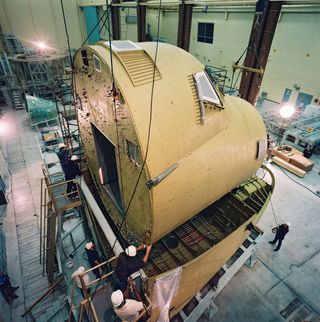
Hoffman is still involved in the field of aerospace, and is currently Boeing's site manager for Edwards Air Force Base in California and NASA's Dryden Flight Research Center. To this day, he marvels at the engineering complexity of the shuttles, and jokes that he is more than eager to talk about the program to anyone who will listen.
"It's still the most complex machine ever built," Hoffman said. "There are well over 2 million parts, over 230 miles of wiring 22,000 to 24,000 tiles — it's just incredible. The legacy will live on, we just need to make sure that NASA and other educators help people realize what a significant part of history the shuttle program was."
Looking to the past and the future
With the space shuttle program drawing to a close later this year, Lang reflected on his profound sense of pride, knowing he was part of a program that is an iconic part of the nation's space program.
"When you travel and people ask you what you do, you puff out your chest and say you work on the space shuttles. It's absolutely defining," he said. "It's a little bittersweet to see something like the orbiter flying for the last time, but regardless, it's been an incredibly successful and incredibly amazing program."
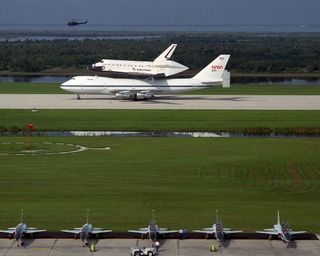
Woolhouse also spoke about his strong sense of pride and recounted the numerous achievements from the space shuttle program.
"I'm very proud to have been part of the shuttle team," Woolhouse said. "I think it's the best accomplishment anyone who has lived in my period of time can say. There are a lot of bad things that have happened on the Earth over the last 40 to 50 years, but some of the high points have been the space shuttles and the International Space Station."
He recalled one particularly unforgettable day in his career when he was asked to fly from California to Florida overnight to assist with one of the orbiters being processed at NASA's Kennedy Space Center.
"I flew the red-eye flight, and the next morning drove to KSC," Woolhouse said. "I worked all day long and at the end of my assigned work period, I went down to the beach to watch another shuttle launch from the pad at night. So, I started on the West Coast, spent the night flying to the East Coast, spent the next day working on the vehicles that I love, and then at the end of the day, I got to see one of them launch into orbit. I'll never forget that. I always thought that was the most perfect day I ever spent."
You can follow SPACE.com Staff Writer Denise Chow on Twitter @denisechow. Visit SPACE.com for complete coverage of Endeavour's final mission STS-134 or follow us @Spacedotcom and on Facebook.
Join our Space Forums to keep talking space on the latest missions, night sky and more! And if you have a news tip, correction or comment, let us know at: community@space.com.

Denise Chow is a former Space.com staff writer who then worked as assistant managing editor at Live Science before moving to NBC News as a science reporter, where she focuses on general science and climate change. She spent two years with Space.com, writing about rocket launches and covering NASA's final three space shuttle missions, before joining the Live Science team in 2013. A Canadian transplant, Denise has a bachelor's degree from the University of Toronto, and a master's degree in journalism from New York University. At NBC News, Denise covers general science and climate change.